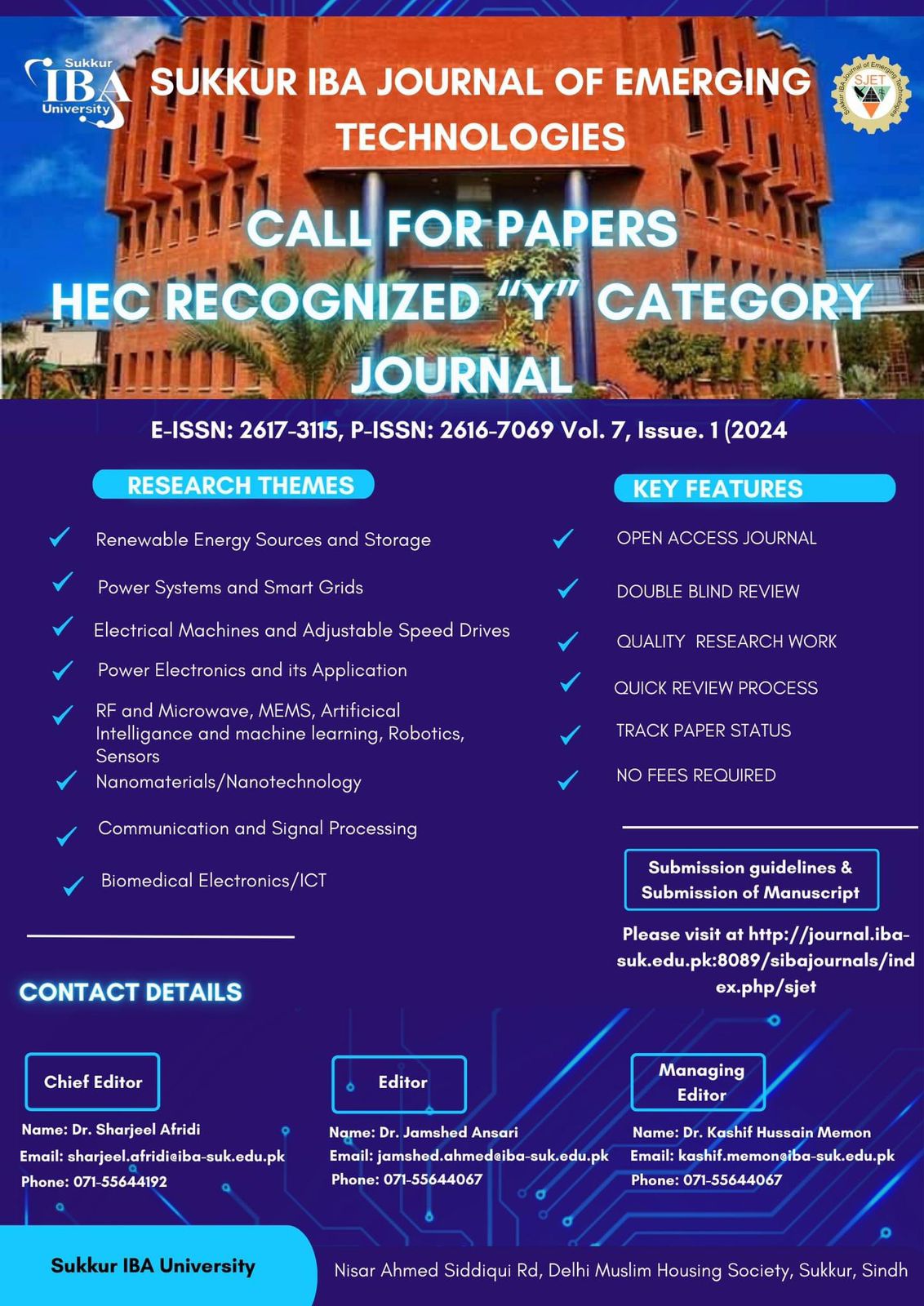Nature Inspired Optimization Techniques, A review for FANETs
DOI:
https://doi.org/10.30537/sjet.v3i2.716Abstract
Flying Ad Hoc Network (FANET) is a revolutionary achievement in the class of ad hoc networks to access areas near calamities. The concept of pilot free system takes place in technological advancement and computations. Networking advancements introduces Unmanned Aerial System (UAS) while the device that makes this system applicable is known
as flying drones or Unmanned Aerial Vehicle (UAV). Single UAV may be employed as individual system, but it is more useful when UAVs in a network cooperate with each other. UAV deployments are rapid and pliant that reduces the tradition ad hoc network limitations. UAV have small operating structure and efficient energy life. Advance flight control mechanism makes FANETs differ from traditional adhoc networks. FANETs can visualized to play key role where humans are in danger or rescue tasks are too dull or dirty. Improving the performance of flying drones leads to ease-of-use for formation of network, high stability and fast deployment. Routing and cooperative task allocation of nodes is complex in adhoc networks. In contrast of the study of traditional schemes, our paper is based on the nature inspired schemes. This review study in on routing protocols of BeeAdHoc, AntHocNet and Moth-Ant inspired routing. In addition, the overview leads to wild life behavior of Hill Myna and Desert Sparrow Optimization comparative to other biological algorithms is presented in terms of task allocation and rendezvous cooperatively. Biological inspired behaviors trend to know the efficient problem solutions for FANETs.
Downloads
Downloads
Published
Issue
Section
License
The SJET holds the rights of all the published papers. Authors are required to transfer copyrights to journal to make sure that the paper is solely published in SJET, however, authors and readers can freely read, download, copy, distribute, print, search, or link to the full texts of its articles and to use them for any other lawful purpose.

The SJET is licensed under Creative Commons Attribution-NonCommercial 4.0 International License.












